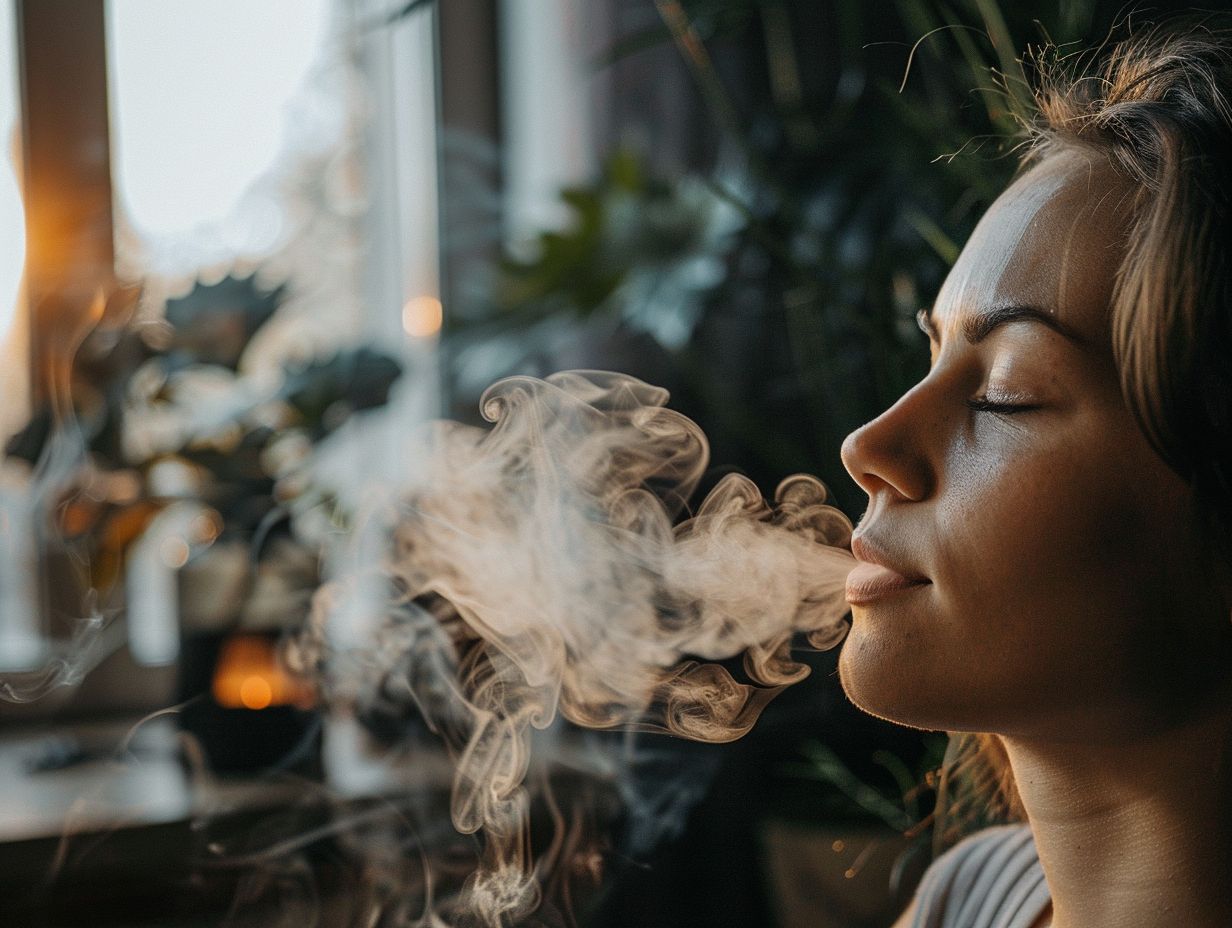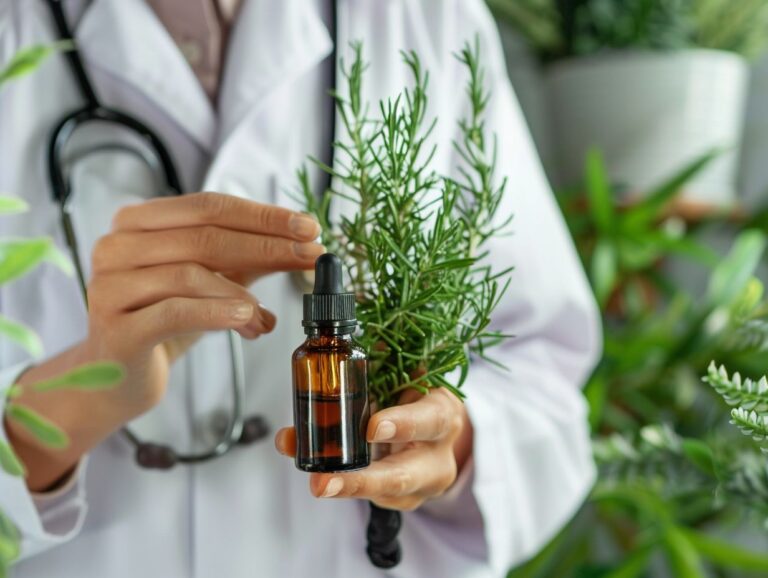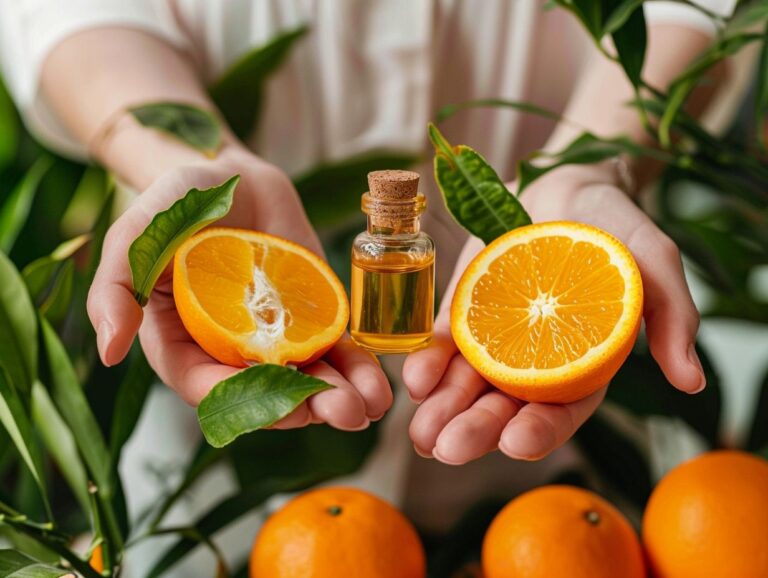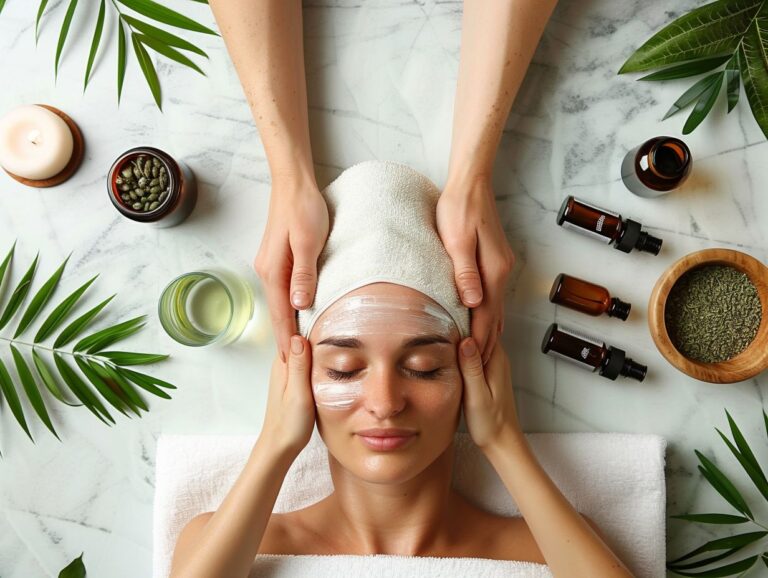What Are the Effects of Aromatherapy
Curious about aromatherapy and how it can benefit your daily life?
This holistic practice uses essential oils to promote overall well-being, from stress relief to improved sleep. Learn more about aromatherapy side effects.
We explore the different methods of aromatherapy, its benefits, and the various types of essential oils commonly used.
Find out how aromatherapy can be incorporated into your home, workplace, and self-care routine to enhance your daily life.
Key Takeaways:
What is Aromatherapy?
Aromatherapy is a holistic therapy that uses plant extracts, known as essential oils, to promote health and well-being. These essential oils are derived from various plant parts such as flowers, leaves, bark, roots, seeds, and peels through processes like distillation or cold pressing.
Essential oils have been used for centuries in different cultures for their therapeutic properties. The use of plant extracts can be traced back to ancient civilizations like Egypt, Greece, and India. These civilizations valued the power of essential oils for physical and emotional well-being. To learn more about aromatherapy uses, click here.
Aromatherapy operates on the principle that the aroma of these oils can stimulate the limbic system in the brain, which plays a role in emotions, behavior, and memory. By inhaling or applying diluted essential oils on the skin, individuals can experience various benefits such as relaxation, stress relief, improved sleep, and even enhanced mood.
How Does Aromatherapy Work?
Aromatherapy works by inhaling or applying essential oils to the skin, where their natural fragrance can evoke positive physical and emotional responses. Research suggests that aromatherapy can be beneficial in treating conditions like Alzheimer’s disease, Parkinson’s disease, anxiety, depression, and sleep disorders.
Aromatherapy operates on the principle that specific scents from essential oils can interact with receptors in the nasal passages, sending signals to the brain that can alter mood, behavior, and even perception of pain. Neurotransmitters play a crucial role in this process by transmitting messages between nerve cells, influencing various bodily functions. This interaction with the nervous system helps explain why certain scents can calm us down, relieve stress, or boost energy levels.
The benefits go beyond just emotional well-being; inhaling these aromatic compounds can also have direct physical effects. Studies have shown that certain essential oils have antibacterial, anti-inflammatory, and analgesic properties, making them valuable in managing conditions such as migraines, nausea, and even skin conditions. aromatherapy locations
By understanding the intricate connection between scent and health, aromatherapy continues to garner interest from both traditional and alternative medicine practitioners for its potential in holistic healing approaches.
What Are the Different Methods of Aromatherapy?
Aromatherapy offers various methods of application, including inhalation, topical application, aerial diffusion, and direct inhalation. Each method has its unique way of delivering the therapeutic properties of essential oils to the body.
Inhalation: This method involves breathing in the aroma of essential oils through methods like steam inhalation or using diffusers. Inhaling essential oils can have immediate effects on the limbic system in the brain, influencing emotions, mood, and memory.
Topical Application: Applying essential oils to the skin allows for absorption into the bloodstream, where they can work locally or throughout the body. This method is commonly used for massage therapy and skincare.
Aerial Diffusion: By dispersing essential oils into the air, aerial diffusion can purify the air, promote relaxation, and support respiratory health.
Direct Inhalation: Directly smelling essential oils from the bottle or a cloth can provide quick relief from issues like headaches or nausea.
Inhalation
Inhalation is a common method in aromatherapy, where the aroma of essential oils is inhaled through the nose or mouth.
When inhaling essential oils, the molecules enter the respiratory system, reaching the lungs and bloodstream, providing therapeutic benefits. Some essential oils, such as eucalyptus and peppermint, are known for their decongestant properties, easing breathing difficulties in conditions like asthma or sinusitis. Explore the physical benefits of aromatherapy for more information.
Certain oils like lavender and chamomile can help alleviate allergies by reducing inflammation and calming the immune response. The antimicrobial effects of oils like tea tree and oregano can combat respiratory infections, acting as natural alternatives to synthetic antibiotics.
It’s crucial to dilute oils properly and avoid prolonged inhalation to prevent overwhelming the senses or potential respiratory irritation, especially for sensitive individuals.
Topical Application
Topical application involves applying essential oils directly to the skin, often diluted with a carrier oil. This method allows for the absorption of the oils through the skin, providing benefits such as skin nourishment, relaxation, and soothing effects.
Common carrier oils used in topical application include jojoba oil, coconut oil, almond oil, and olive oil, which help dilute the essential oils and prevent skin irritation. It is important to perform a patch test before widespread application to check for any potential skin sensitivities or allergies that may arise. By combining specific essential oils with carrier oils, individuals can customize their skincare routine to target various concerns, such as acne, dryness, or aging skin.
Aerial Diffusion
Aerial diffusion involves dispersing essential oils into the air through methods like diffusers or sprays. This method allows for the inhalation of the oils’ fragrance, creating a pleasant atmosphere and potentially alleviating symptoms like nausea and headaches.
By leveraging the power of aromatherapy, aerial diffusion can not only improve the air quality in your living space but also influence your mood and well-being. Different essential oils have unique properties that can bring various benefits, from promoting relaxation to boosting focus and energy.
When selecting a diffuser, consider factors like the size of the room, the intensity of fragrance desired, and the runtime of the device. Ultrasonic diffusers, nebulizing diffusers, and heat diffusers are popular options, each having its advantages.
Direct Inhalation

One of the main benefits of immediate relief through direct inhalation is the rapid absorption of the aroma of the essential oils into the bloodstream via the lungs, allowing for quick therapeutic effects.
It is important to note that individuals with sensitive skin should perform a patch test before direct inhalation to minimize the risk of adverse reactions. In case of any skin irritation, it is advisable to discontinue use and seek medical advice.
What Are the Benefits of Aromatherapy?
Aromatherapy offers a range of benefits, including stress and anxiety relief, pain management, improved sleep quality, and a boosted immune system response. These benefits contribute to the overall well-being of individuals seeking natural and holistic treatment options.
Stress and anxiety relief are among the most well-known benefits of aromatherapy. Essential oils such as lavender, chamomile, and bergamot have calming properties that can help reduce feelings of tension and promote relaxation. Studies have shown that inhaling certain scents can have a direct impact on the brain’s emotional center, leading to a sense of calmness.
In terms of pain management, aromatherapy can provide a natural alternative to traditional medications. Oils like peppermint, eucalyptus, and rosemary have analgesic properties that can help alleviate headaches, muscle aches, and joint pain.
Stress and Anxiety Relief
Aromatherapy is widely used for stress and anxiety relief, with essential oils like lavender and chamomile known for their calming properties. The inhalation or topical application of these oils can help reduce feelings of anxiety and depression, promoting relaxation and mental well-being.
Aside from lavender and chamomile, other popular essential oils for anxiety management include bergamot, rose, and frankincense. These oils are praised for their ability to soothe the mind and body, easing tension and promoting a sense of inner peace. Incorporating aromatherapy into your daily routine can be done through methods such as diffusing oils in a room, adding a few drops to a warm bath, or using them in massage oils.
Pain Management
Aromatherapy has shown promise in pain management, with oils like peppermint and eucalyptus known for their analgesic properties. These oils can help alleviate headaches, migraines, and even discomfort associated with conditions like Alzheimer’s disease.
Peppermint oil is widely recognized for its ability to ease tension headaches and migraines due to its cooling sensation that helps numb pain. Eucalyptus oil, on the other hand, offers anti-inflammatory and decongestant properties that can relieve sinus headaches and migraines triggered by congestion.
When incorporated into a holistic approach, aromatherapy can complement traditional pain management approaches by providing a natural and non-invasive way to alleviate discomfort. Essential oils can be diffused, applied topically, or even added to baths to enhance relaxation and pain relief.
Improved Sleep
Aromatherapy is beneficial for improving sleep quality, with oils like lavender and chamomile promoting relaxation and aiding in restful sleep. Individuals with sleep disorders, including those with Parkinson’s disease, may find relief through the use of aromatherapy as a natural sleep aid.
These essential oils, along with others such as cedarwood and ylang ylang, are known for their sedative properties, calming the mind and body to induce a state of tranquility conducive to sleep. Incorporating aromatherapy into your bedtime routine can signal to your brain that it’s time to unwind, creating a soothing environment that prepares you for rest. To create a sleep-inducing atmosphere, consider diffusing a blend of these oils or diluting them in a carrier oil for a relaxing massage before bedtime.
Boosted Immune System
Aromatherapy may support a boosted immune system, with certain oils exhibiting antimicrobial properties that can help defend against pathogens. While not a replacement for medical treatment, aromatherapy can complement overall health and wellness practices to reduce the risk of illnesses like heart disease.
One of the key essential oils known for their antimicrobial activity is tea tree oil, which has been used traditionally for its immune-boosting benefits. Likewise, eucalyptus oil is praised for its ability to fight respiratory infections, while lavender oil is often used for its calming and antimicrobial properties.
Consulting with healthcare professionals is crucial, especially for individuals with underlying health conditions like heart disease, as certain essential oils may interact with medications or exacerbate existing health issues. Proper guidance ensures that the benefits of aromatherapy are optimized without causing any adverse effects.
What Are the Different Types of Essential Oils Used in Aromatherapy?
Aromatherapy utilizes a variety of essential oils, each with unique properties and benefits. Some popular essential oils commonly used in aromatherapy include lavender, peppermint, tea tree, and eucalyptus, known for their versatile applications and therapeutic effects.
Lavender oil is cherished for its calming and relaxing properties, ideal for promoting sleep and reducing anxiety. Peppermint oil is invigorating and helps alleviate headaches and improve focus. Tea tree oil is renowned for its antibacterial and antifungal properties, making it great for treating skin conditions and boosting immunity. Eucalyptus oil is commonly used for respiratory issues and as a natural decongestant.
Blending these oils can create powerful synergies for specific therapeutic purposes. For example, mixing lavender and peppermint can enhance relaxation and clarity, while tea tree and eucalyptus blend well for respiratory support and immune-boosting benefits.
Lavender

Lavender essential oil is renowned for its calming and relaxing properties, making it a popular choice in aromatherapy for stress relief and promoting sleep. Individuals with sensitive skin may experience irritation or allergies when using undiluted lavender oil.
One of the key benefits of lavender essential oil is its ability to soothe the mind and body, helping to reduce feelings of anxiety and tension. Its gentle aroma is known for inducing a sense of tranquility, aiding in relaxation during times of stress or before bedtime. Incorporating aromatherapy benefits into your bedtime routine can help promote a restful night’s sleep, making it a valuable tool for those struggling with insomnia.
When using lavender oil topically, it is crucial to dilute it with a carrier oil to avoid skin irritation. Patch testing is recommended before full application to ensure compatibility with your skin. Diffusing lavender oil in a well-ventilated room can provide the calming benefits without direct contact with the skin, minimizing the risk of adverse reactions.
Peppermint
Peppermint essential oil is known for its refreshing aroma and cooling sensation, often used in aromatherapy for relieving headaches, migraines, and nausea. Direct application of peppermint oil without proper dilution can cause skin irritation or sensitivity.
While peppermint oil is widely recognized for its remarkable ability to ease tension headaches and promote mental clarity, it also has a soothing effect on an upset stomach when inhaled or applied topically. Its analgesic and anti-inflammatory properties make it a popular choice for natural pain relief, especially for individuals suffering from migraines.
When using peppermint oil in aromatherapy effects on body, it is important to remember that only a few drops are needed in a diffuser to experience its benefits. Diluting it with a carrier oil like coconut or almond oil before applying to the skin helps prevent any adverse reactions.
Inhaling the invigorating scent of peppermint oil can provide quick relief from nausea and motion sickness. Always exercise caution when using essential oils, ensuring proper ventilation and avoiding direct contact with sensitive areas like the eyes.”
Tea Tree
Tea tree essential oil is valued for its strong antimicrobial properties, making it a popular choice for skincare and combating infections. While beneficial, tea tree oil may cause skin reactions like redness, itching, or a rash in individuals with sensitivities.
It is important to note that tea tree oil is a versatile natural remedy that offers a range of benefits beyond its antimicrobial properties. In aromatherapy, tea tree oil is often used to help treat respiratory issues, boost immunity, and promote relaxation. When incorporated into skincare routines, tea tree oil can help reduce acne breakouts, soothe inflammation, and provide a natural alternative to chemical-laden products. Its antibacterial and antifungal properties make it an effective tool for controlling infections.
To ensure safe usage, it is recommended to always dilute tea tree oil before applying it to the skin. A common dilution ratio is 1-2% in a carrier oil to prevent adverse reactions. Patch testing is also crucial, especially for those with sensitive skin. By following these guidelines, individuals can harness the power of tea tree oil without experiencing unwanted skin irritations.
Eucalyptus
Eucalyptus essential oil is known for its respiratory benefits, helping to clear congestion and ease breathing. This oil is commonly used in aromatherapy to address respiratory issues like colds, sinusitis, and allergies, but caution is advised for individuals with asthma or sensitive respiratory systems.
One of the key advantages of eucalyptus essential oil in aromatherapy is its ability to open up the airways and promote clear breathing, making it a popular choice for those struggling with congestion or sinus problems. The oil’s decongestant properties can help break down mucus and phlegm, providing relief from respiratory discomfort. It also possesses anti-inflammatory and antibacterial properties, which can aid in fighting off infections and soothing irritated air passages.
When using eucalyptus oil for respiratory issues, it is essential to dilute it properly before application, especially for individuals with asthma or respiratory sensitivities. A safe method is to add a few drops of eucalyptus oil to a carrier oil like coconut or almond oil before massaging it onto the chest or inhaling it through steam. Utilizing a diffuser to disperse the oil into the air can also provide respiratory benefits without direct skin contact.
Are There Any Side Effects of Aromatherapy?
Although generally safe, aromatherapy may cause side effects in some individuals, such as skin irritation, allergies, nausea, headaches, or respiratory issues. It is essential to perform a patch test before using essential oils and consult with a qualified aromatherapist or healthcare provider for personalized guidance.
Certain essential oils are photosensitive, meaning they can cause skin sensitivity when exposed to sunlight. Extra caution should be taken when using citruses oils like lemon or bergamot.
Improper dilution or overuse of essential oils can lead to adverse reactions. It is crucial to follow proper dilution guidelines and avoid ingesting essential oils without professional guidance.
For individuals with specific health conditions such as pregnancy, epilepsy, or high blood pressure, seeking advice from a healthcare professional becomes even more imperative to ensure safe usage of essential oils.
How Can Aromatherapy Be Used in Daily Life?
Aromatherapy can be incorporated into daily life in various settings, including the home, workplace, and self-care routines. By diffusing calming oils at home, using energizing scents at work, or practicing mindful aromatherapy rituals, individuals can enjoy the therapeutic benefits of essential oils throughout the day.
For relaxation at home, consider using lavender or chamomile essential oils in a diffuser to create a soothing ambiance. To enhance focus and productivity in the workplace, peppermint or rosemary oils can be diffused to help stimulate the mind. Incorporating aromatherapy massages into your self-care practices with oils like eucalyptus or bergamot can provide a rejuvenating experience.
To create a personalized routine, experiment with different oils to find scents that resonate with you. It’s important to dilute essential oils properly and always patch test before use. Designate specific times during the day for your aromatherapy practices to establish a consistent routine that fits your lifestyle.
In the Home
Integrating aromatherapy into the home environment can create a calming and inviting atmosphere. Individuals with skin sensitivities should be cautious with direct skin contact or inhalation of strong essential oils to avoid potential allergic reactions like redness, itching, or hives.
For safe and effective use of aromatherapy at home, consider investing in a high-quality essential oil diffuser that disperses the scents evenly throughout the room. Different oils can be used to create personalized blends for specific purposes:
- Lavender and chamomile for relaxation in the bedroom
- Peppermint and eucalyptus for a revitalizing atmosphere in the home office
- Citrus oils like lemon or orange to uplift and freshen up common areas
Always dilute essential oils appropriately before applying to the skin to prevent adverse reactions. Prioritize organic, pure oils from reputable sources and conduct a patch test on a small area of skin before widespread use. When diffusing oils, ensure proper ventilation and never leave the diffuser unattended. By following these tips, you can enjoy the benefits of aromatherapy while maintaining a safe and harmonious home environment.
In the Workplace

When integrated into the workplace, aromatherapy can help employees stay alert and attentive during long work hours. The soothing scents of essential oils like lavender and peppermint have shown to have calming effects, reducing workplace anxiety and tension.
Creating a positive atmosphere through aromatherapy can foster better communication and collaboration among team members. A pleasant-smelling environment can also lift spirits and improve overall mood, leading to a more harmonious and productive work environment.
In Self-Care Practices
Incorporating aromatherapy into self-care routines can promote relaxation, relieve headaches, and alleviate nausea. Whether through aromatic baths, massage oils, or personal inhalers, individuals can experience the therapeutic benefits of essential oils for holistic well-being.
For relaxation, diffusing lavender or chamomile essential oils can create a calming ambiance in your living space. Headaches can be soothed by applying diluted peppermint or eucalyptus oil to temples. Managing nausea can be supported by inhaling ginger or peppermint oil vapors.
- Integrating aromatherapy into your daily routine can be as simple as adding a few drops of your preferred essential oil to a diffuser in the morning or enjoying a lavender-infused bath before bed.
- Experimenting with different scents and methods allows you to tailor your aromatherapy practice to your specific needs, whether you seek relaxation, headache relief, or nausea management.
Frequently Asked Questions
What Are the Effects of Aromatherapy?
Aromatherapy has been used for centuries to promote physical, mental, and emotional well-being. Here are some common questions about its effects.
How does aromatherapy work?
Aromatherapy works by stimulating the olfactory system, which is connected to the brain. When essential oils are inhaled, the receptors in the nose send messages to the limbic system, which is responsible for emotions and memory.
What are the physical effects of aromatherapy?
Aromatherapy can have various physical effects, depending on the specific essential oils used. Some oils have anti-inflammatory properties, while others can help with pain relief or boost the immune system.
Can aromatherapy improve mood and emotions?
Yes, certain essential oils have been shown to have a positive impact on mood and emotions. For example, lavender has a calming effect, while citrus oils can help to uplift and energize.
Are there any potential side effects of aromatherapy?
When used correctly, aromatherapy is generally safe and well-tolerated. However, some people may experience skin irritation or allergic reactions to certain essential oils. It is always important to dilute oils properly and perform a patch test before using them topically.
What are the mental and emotional benefits of aromatherapy?
In addition to promoting relaxation and reducing stress, aromatherapy has been shown to improve sleep quality, reduce anxiety and depression, and enhance overall well-being. It can also be used to support cognitive function and memory.








6 Comments